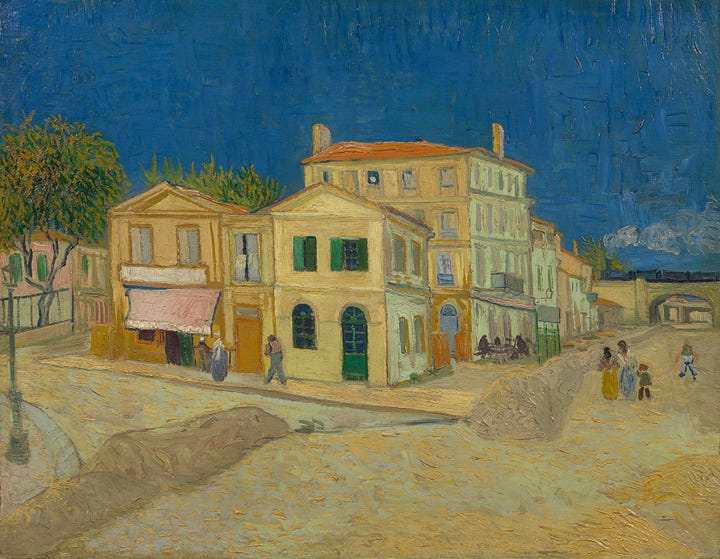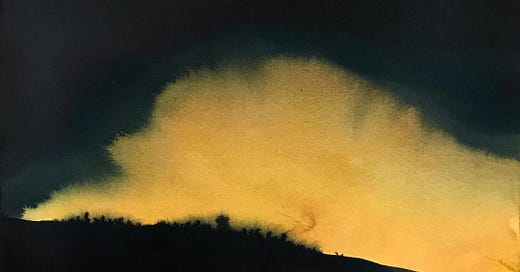You don’t often see yellow in drawing. When you do, it rarely makes the drawing better. Yellow is difficult – it takes over, pulls the eye in too many directions. But Magali Cazo knows how to tame it. She guides it, balances it, makes it work for her, not against her.
Few artists have mastered this. Konrad Witz in La Synagogue (1435). Van Gogh in La Maison Jaune (1888). Gauguin in The Yellow Christ (1889). František Kupka in The Yellow Scale (c. 1907).
To me, Magali Cazo stands in this company. I asked her about this drawing. Here’s what she said – scroll down for the French original:
“I paint my landscapes from memories and sensations. I like my images to be both realistic and slightly detached from reality. They pass through my imagination and memory, which will never be able to perfectly translate what it has seen.
The first images in this series came directly from childhood, then they transformed over the years and through my travels. Symmetry emerged naturally, like a search for balance or a desire to speak about the body by depicting nature.
My damp paper creates blurred atmospheres, and the water brings its share of surprises, which I embrace and compose with. It is a living ink that expresses itself, requiring an acceptance of the unexpected.
Color plays an important role—I strive to capture those moments when the light fades, setting off bursts of vivid tones that stand out against the encroaching shadow. The daily splendor of the setting sun.”




“Je peins mes paysages à partir de souvenirs et de sensations. J’aime que mes images soient à la fois réalistes et décalées par rapport au réel. Elles passent par mon imaginaire et ma mémoire qui ne saura jamais traduire parfaitement ce qu’elle a vu.
Les premières images de cette série me venaient directement de l’enfance, puis elles se sont métamorphosées au fil des années et de mes déplacements. La symétrie s’est imposée, comme une recherche d’équilibre ou le désir de parler du corps en représentant la nature.
Mon papier humide crée des ambiances floues et l’eau amène son lot de surprises avec lesquelles je compose. C’est une encre vivante qui s’exprime et qui implique d’accepter l’inattendu.
La couleur joue un rôle important, je cherche à traduire ces instants où la lumière baisse et laisse éclater des teintes vives qui contrastent avec l’ombre qui s’installe. La splendeur quotidienne du soleil couchant.”




